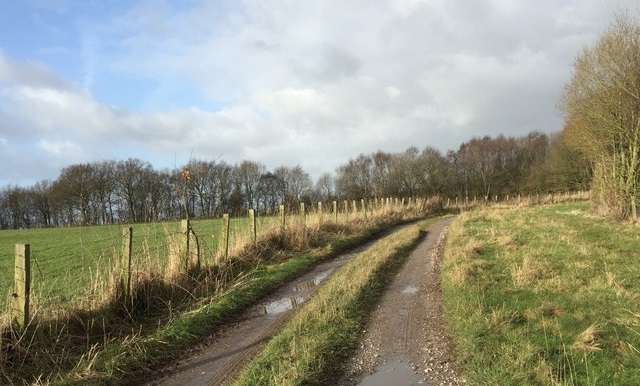Cameras with inbuilt detective skills to catch rural criminals

Smart cameras hidden in the countryside could soon help police fight back against rural crime and finally bring down secret smuggling routes.
Nature documentaries have long utilised camera traps to film elusive animals in the dead of night. When a nocturnal creature passes by its motion-sensitive sensor, the camera is triggered into action and captures images a filmmaker could only dream of.
And it turns out that this approach could be used in areas where criminal activity is suspected.
A new crime-fighting camera has been developed which scans a scene and differentiates what it sees. If its sensor spots something suspicious, it wakes up the camera and a platoon of algorithms kicks into action to process what's happening. Screenshots and video are then sent to local police stations who can take the investigation further.
The miniaturised cameras are being developed by the EU-funded FORENSOR project. They can survive on one-tenth of the power of a normal surveillance camera and are easily concealable, meaning they can operate cheaply in isolated areas with little infrastructure.
'We don't have a lot of surveillance equipment that is low powered and which you can leave in one place for a long time to record images,' explained Lazaros Gymnopoulos, visual computing researcher at the Centre for Research and Technology-Hellas (CERTH), in Greece, and security officer for the FORENSOR project.
'And crimes can happen where we don't have the infrastructure to support surveillance systems like you would have in big cities.'
Portuguese police are interested in using it for remote coastal areas in Lisbon, where small motor boats loaded with drugs may approach isolated beaches with all lights turned off. The new cameras would stay in low-power mode when faced with waves or trees swaying but would kick into action as a potential criminal scenario plays out.
A second scenario to be tested is in a national park in Valencia, Spain. Here the camera can identify vehicles driven by someone under the influence of alcohol or drugs. Similarly, police in Cuisi in Italy are hoping to deploy the cameras so they can alert them if someone is climbing a fence, entering houses through a window or driving around a neighbourhood suspiciously.
Dr Nicholas Vretos, computer scientist at CERTH, and quality manager at FORENSOR, said: 'The police officer will judge if what is detected is of interest or not.'
A crucial part of FORENSOR is to ensure that the evidence gathered by the cameras is allowed in court, which means ensuring that nobody sees the footage who should not and protocols are followed to ensure the footage is correctly documented to support an investigation. The drones will also integrate privacy into its design so that it only records activity at certain times when criminal activity is suspected.
'There is even a standard way for a camera to handle the information in order for this information to be admissible in court,' said Dr Vretos.
By the end of the project, FORENSOR aims to have a prototype that they can promote amongst police forces in Europe. Already, the Greek navy has expressed an interest in the surveillance equipment, as such smart devices could better monitor remote, uninhabited islands and alert authorities to the activities of people smugglers.
Crime-fighting tools
Motion sensitive cameras will help catch drug and people traffickers, but criminals, or terrorists, will always find creative ways to conceal illegal substances.
The EU-funded NOSY project is developing a smartphone-sized scanner that law enforcement agents can hold in their hand. The smart materials inside will alert them to the presence of particles and sticky molecules from either explosives or drugs.
Another option is something called a sniffer, which is a smaller device that could be concealed in an area of interest or placed in a device, such as a walkie-talkie. It too will be capable of alerting police officers if someone passes by with a bag containing suspicious items.
To further boost the capabilities of the good guys, NOSY is developing a smart cable that could be strung along entrances or walls of tube stations, airports or malls. Crucially, the unseen cables would be dotted with smart but inexpensive button-sized sensors, designed to alert security services to tell-tale chemicals from explosives or illegal drugs.
Daniele Fattibene, a security and defence researcher at the Istituto Affari Internazionali (IAI) in Italy, said: 'The cable could reach a length of a few hundred metres and can be deployed in all sorts of public spaces or close to security checkpoints. It will be concealable.'
All three devices will be miniaturised so they have low impact in terms of size, but high impact in detection.
'The strategy is to create small, effective and user-friendly materials and devices,' said Fattibene, who is also involved in the dissemination of the NOSY project.
Once an alert goes off, information will be sent securely to a monitoring station and communicated to law enforcement. A crucial part of the project is to ensure that this information is secure, even if items are stolen, and also that evidence gathered can be used in court.
'We have experts who are creating a certification process which will enable NOSY devices to be used as proof during court proceedings,' Fattibene said.
Ethical and legal experts are also looking at all parts of the project to ensure citizens' rights and privacy underpin developments.
Provided by Horizon: The EU Research & Innovation Magazine




















